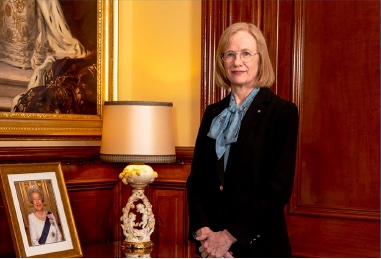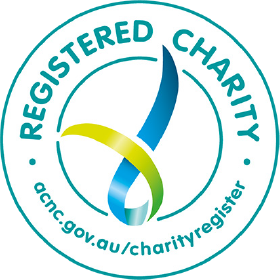Enhancing Queensland’s Tourism Through Inclusive Hearing Solutions: A Pathway to 2045

Submission to Destination 2045: Queensland’s Tourism Future
In February 2025, BHA Brisbane submitted the following to the Destination 2045: Queensland’s Tourism Future call for inputs. It is derived largely from our submission to Brisbane 2032 Olympic and Paralympic Games Infrastructure Planning.
1. Introduction
Queensland’s Destination 2045 initiative aims to shape the future of the state’s tourism and infrastructure, ensuring long-term sustainability, accessibility, and inclusivity. As Queensland prepares for future global events and increased tourism, Better Hearing Australia Brisbane (BHA) believes it is essential to prioritise universal access so that every visitor, resident, and participant can fully experience all that the state has to offer. By embedding accessibility into planning, Queensland can establish itself as a leader in inclusive tourism and community engagement.
BHA is excited to see the Destination 2045 discussion paper highlight key focus areas of Investment Attraction, Tourism Experience Development, Events Delivery, and Access and Connectivity as each, while not explicitly outlined in the discussion paper, recognise the importance of disability accessibility to Queensland’s tourism offerings. Australia’s demographic, accounting for 82% of visitors to Queensland is aging, a fact that cannot be ignored if we are to deliver a tourism offering that caters to our biggest market.
This submission outlines the increasing prevalence of hearing loss in our community and the importance of addressing that hearing loss to provide increased accessibility, not just to visitors but to staff and volunteers in our tourism industry as well.
BHA, a Queensland Disability Peak and Representative Body, is uniquely positioned to support a vision reducing barriers to tourism experiences for people with hearing loss through its leadership in hearing augmentation and accessibility solutions. As the driving force behind LoopMe, Australia’s only social enterprise dedicated to hearing augmentation, BHA delivers not only advocacy, referral and advisory services, but also innovative solutions such as hearing loops and assistive listening devices designed to specifically break down barriers for people with hearing loss.
By integrating these technologies into Queensland’s tourism infrastructure, public spaces, and event venues, LoopMe and BHA can help create an inclusive and welcoming environment for millions of visitors and residents, including those with hearing loss..
2. The Case for Hearing Augmentation
Over 28.17 million visitors travelled to Queensland in 2024 (year ending September). This total included 26.02 million domestic visitors.The sobering fact is that this could mean hundreds of thousands of visitors with hearing loss.
According to the World Health Organisation (WHO), over 1.5 billion people live with some degree of hearing loss globally, representing nearly 20% of the world’s population, with around 430 million requiring rehabilitation services and devices for their hearing loss.
In Australia research shows at least 1 in 6 Australians experience some form of hearing loss. And it is expected that this will be 1 in 5 by 2050, if not before.
This increase is partly driven by Australia’s aging population, as hearing loss prevalence rises significantly with age. For example:
- 1 in 2 Australians aged over 60 will experience some degree of hearing loss by 2032.
- 1 in 3 working-age Australians (ages 50–64) are also likely to be affected, highlighting the growing impact on all aspects of society, including workforce participation and social engagement.
At current figures this equates to over 4.5m visitors to Queensland with some level of hearing loss. And that is projected to rise to 20% of visitors in 2045. This projected rise underscores the importance of planning accessible infrastructure for tourism attractions, accommodation and transport to cater to the needs of this significant and growing demographic.
To improve accessibility the planning and delivery of tourism infrastructure and services should align with Australia’s Disability Discrimination Act 1992 (DDA), and international best practices for accessibility, such as those outlined in the United Nations Convention on the Rights of Persons with Disabilities (CRPD). Similarly, Australia’s Disability Strategy 2021-2031 outlines a vision for a more inclusive and accessible Australian society where all people with disability can fulfil their potential as equal members of the community. Queensland’s Disability Plan 2022–2027, titled “Together, a better Queensland,” outlines the state’s commitment to building an inclusive society for all individuals with disabilities, including those with hearing loss.
These frameworks and plans mandate equitable access to services, facilities, and information for all individuals, including people with disabilities. Hearing augmentation solutions, such as hearing loops and captioning, are critical in meeting these obligations, as they provide direct, effective communication support for individuals with hearing loss.
By integrating hearing augmentation technologies into tourism attractions, public spaces, and transport infrastructure, Queensland can demonstrate a commitment to global accessibility standards, setting an example for future international events.
3. Key Recommendations to Inform Queensland’s Tourism Strategy
To support visitors to Queensland who live with hearing loss, BHA urges the Queensland Government to consider the following recommendations:
- Support all attractions, public venues and transportation hubs to acquire or include permanent or temporary hearing augmentation technology in their infrastructure planning and upgrades.
- Equip public transportation and transportation hubs with hearing augmentation solutions to support navigation and communication for visitors.
- Support the education of tourism staff and volunteers on the prevalence of hearing loss, hearing loss awareness, communication skills, and how hearing augmentation systems can improve visitor experiences.
- Partner with LoopMe by BHA for consultation, design, and implementation of hearing augmentation solutions.
4. The Broader Impact of Inclusive Tourism Infrastructure
The Destination 2045 initiative offers an opportunity to establish Queensland as a global leader in accessible infrastructure. By prioritising inclusivity in planning and design, the initiative can leave a legacy of public spaces, transport systems, and venues that are not only world-class but also universally accessible. This commitment will benefit Queensland’s tourism industry, foster greater community engagement, and serve as a benchmark for other tourism markets.
Incorporating hearing augmentation solutions can help ensure individuals with hearing loss can fully participate in the tourism experience, breaking down barriers and promoting social inclusion. Accessible infrastructure, such as best practice hearing loops and assistive listening devices, empowers people with hearing challenges to engage confidently, fostering a more equitable and connected community.
5. LoopMe by BHA
LoopMe by BHA is Australia’s only certified social enterprise dedicated to providing accessible, affordable, and sustainable hearing augmentation solutions. With a mission to break down barriers for individuals with hearing loss, LoopMe is committed to creating spaces where everyone can connect, communicate, and thrive.
LoopMe has a strong track record of delivering high-quality hearing augmentation installations in public spaces across Queensland. From shopping centres, conference venues and customer service centres, its solutions have enhanced accessibility for thousands, ensuring people with hearing loss can participate fully in everyday activities and special events.
*All proceeds from LoopMe sales and service go towards BHA’s direct supports to people with a disability.
6. Conclusion
Hearing augmentation is a vital element of inclusive infrastructure for tourism operations in Queensland.
By incorporating technologies like hearing loops, we can ensure equitable access for all visitors, helping create inclusive attractions and facilities to serve the almost 20% of the population with hearing loss.
We urge decision-makers to prioritise hearing augmentation in the planning and execution of the tourism infrastructure moving forward.





